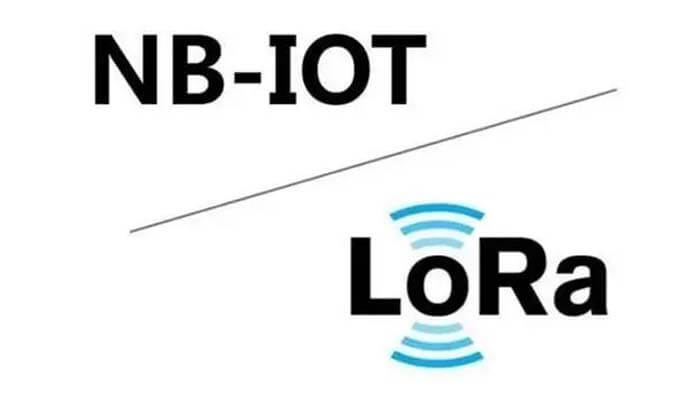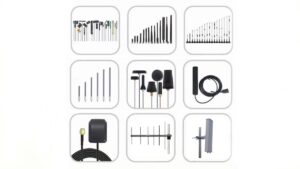Today, we talk about the technologies NB-IoT vs Lora, the NB-IoT communication technology, and Lora communication technology discussion and analysis.
The Internet of Things is an important part of the new generation of information technology. The development of information technology today has shifted from the demand for human-to-human communication to the interconnection between humans and things as well as between things, and finally to the interconnection of all things.
Sensor technology, embedded system technology, and communication technology are three important components of IoT, and communication technology is the material basis for information transmission and logistics among IoT units, and today we will discuss NB-IoT vs Lora communication technology.
NB-IoT communication technology in NB-IoT vs Lora
NB-IoT(Narrowband IoT) is a low-cost carrier-grade high-reliability and high-security wide-area IoT technology that can evolve with cellular network convergence. NB-IoT is built on top of a cellular network with low consumption, consuming only about 180KHz band, and can be directly deployed in the GSM network, UMTS network, and LTE network.
NB-IoT Advantages in NB-IoT vs NB-IoT
- The ability of massive connections, NB-IoT can provide 50~100 times more access than existing wireless technologies with the same base station. One sector is able to support 100,000 connections, with low equipment cost, low power consumption of equipment, and optimized network architecture.
- Wide coverage, under the same frequency band, NB-IoT improves 20db over the existing network gain, which is equivalent to improving the coverage area by 100 times.
- Low power consumption, NB-IoT can achieve ultra-long standby with PSM and eDRX, and its terminal module standby time can be as long as 10.
- Low cost, unlike Lora, NB-IoT does not need to re-build the network, RF and antenna are reusable, and the expected module price for enterprises is not more than $5.
NB-IoT Key technologies in NB-IoT vs Lora
1. How NB-IoT in NB-IoT vs Lora is deployed?
NB-IoT in NB-IoT vs Lora occupies 180KHz bandwidth, in consideration of the protection band on both sides, a total of 200KHz, supporting three deployment scenarios, respectively, independent deployment, the communication bandwidth of GSM is 200KHz, just to make room for NB-IoT bandwidth, there is also a 10KHz protection interval on both sides, and also no overlap with the frequency band in LTE, so it is suitable for GSM band re-farming.
2. NB-IoT physical layer features in NB-IoT vs Lora
The physical channel of NB-IoT in NB-IoT vs Lora is largely based on LTE. The downlink of NB-IoT adopts orthogonal frequency multiple access technologies, and the carrier bandwidth is 180KHz, which ensures the compatibility of the downlink with LTE.
For the downlink, NB-IoT in NB-IoT vs Lora designs three physical channels, including a narrowband physical broadcast channel, a narrowband reference channel, a primary synchronous signal, and a secondary synchronous channel.
By shortening the downlink physical channel types, the downlink transmission bandwidth characteristics are satisfied as well as the coverage area requirements are enhanced.
NB-IoT communication distance in NB-IoT vs NB-IoT
The signal coverage of mobile networks depends on the base station density and link budget. nb-IoT has a link budget of 164dB, GPRS has a link budget of 144dB, and LTE is 142.7 dB.
Compared with GPRS and LTE, NB-IoT has a 20dB improvement in link budget, and the signal coverage in an open environment can be increased by seven times. 20dB is equivalent to the loss of signal penetration through the exterior wall of the building, and the signal coverage of NB-IoT in an indoor environment is relatively better. Generally, the communication distance of NB-IoT is 15km.
NB-IoT communication technology in NB-IoT vs Lora
Lora in NB-IoT vs Lora is one of the LPWAN communication technologies, which is an ultra-long-range wireless transmission solution based on spread spectrum technology adopted and promoted by Semtech, USA, providing users with a simple system that can achieve long-distance, long battery life, and large capacity, and then extend the sensing network.
Currently, Lora mainly operates in global free bands, including 433 MHz, 868 MHz, 915 MHz, etc.
Lora communication protocol in NB-IoT vs Lora
The network layer protocol based on Lora technology is mainly LoraWan, which defines the network communication protocol and system architecture. The communication system network of LORAWAN is a star network architecture, which is divided into three main types.
- Point-to-point communication, where point A initiates and point B receives.
- Star network polling, a point-to-multi-point approach, a central point and N nodes, from the node to start, the central point to receive and then confirm the completion of reception, and the next node to continue uploading until N nodes complete.
- Star network concurrency, is also a point-to-multipoint communication, the difference is that multiple nodes can communicate with the central point at the same time, which saves the power consumption of the nodes, avoids the failure of individual nodes that causes network paralysis, and the stability of the network is improved.
The frequency band of Lora in NB-IoT vs Lora
Lora uses license-free ISM bands, but the use of ISM bands varies from country to country or region to region.
In the Chinese market, the China Lora Application Alliance (CLAA), led by ZTE, recommends the use of 470-510 MHz, while radio metering meters use the band 470-510 MHz.
Since Lora works in the license-free band, network construction is possible without application, network architecture is simple, and operating costs are low.
The Lora consortium is pushing hard for a standardized LoRaWAN protocol globally, enabling LoRaWAN compliant devices to interoperate.
Application of Lora in NB-IoT vs Lora
Lora wireless technology uses global free frequency bands, base stations, or gateways that have strong penetration capability and can connect sensors in suburban areas up to 15~30KM.
Lora uses asynchronous protocols, nodes can sleep for varying lengths of time depending on the completion of specific tasks, complemented by a low data rate, allowing for a battery life of 3-10 years with wide coverage and long life.
And Lora nodes can reach millions. These remarkable features allow Lora technology to be used in IoT applications that require low power consumption, long distance, and a large number of connections.
For example
Intelligent transportation, which accurately provides traffic data such as speed, distance, and traffic flow.
Smart parking, enables information transparency through real-time monitoring of parking spaces, resulting in accurate charging and reduced labor costs.
Intelligent bridges can reduce the probability of accidents through timely assessment of bridge status.
Smart urban manhole covers, achieve fewer vehicle accidents, injuries, and deaths by monitoring the location of manhole covers.
Intelligent agriculture, by monitoring temperature, humidity, wind speed, etc. Grasp the production status and improve the yield.
In addition to this, it can also be in smart medical, smart marine, smart tracking, etc.
Cost comparison of NB-IoT vs Lora
LPWAN protocols no matter how powerful need to be considered for their low cost, otherwise, they are not considered viable IoT solutions. Lora has an advantage in this regard.
The overall cost of a LoRaWAN module is around $8-10, about half the price of a cellular LTE module such as NB-IoT.
The higher the complexity of the NB-IoT network, the higher the IP-related (in terms of licensed bands) costs, raising the total cost of NB-IoT.
NB-IoT upgrades to advanced 4G/ LTE base stations are more expensive than LORA deployments via industrial gateways or tower top gateways. The cost of Lora technology is expected to decline further as the market becomes more mature.
C&T RF Antennas Inc is a company that specializes in antennas. The company’s wireless antenna products are mainly used by other companies that make products for IoT devices, so C&T RF Antennas Inc has a wide range of products such as wireless antennas, a wide range of models, and very reasonable prices.
C&T RF Antennas Inc has a wide range of wireless antenna products, including 169 MHz, 433 MHz, 470 MHz, 700 MHz, 800 MHz, 868 MHz, 900 MHz, 915 MHz, 2.4 GHz, 5.8 GHz, 3.5 GHz, GPS, GSM, LTE, NB-IoT, Lora and other bands.
There are also many antenna products for Bluetooth, WIFI, and LTE, which can be used for data transmission without user development and directly with ready-made antenna design products. Interested readers can go to C&T RF Antennas Inc’s official website to understand, there is much worth learning and referencing RF technical information.
Besides the NB-IoT vs Lora Technology article, You may also be interested in the below articles.
PCB Antenna VS. External Antenna
Ceramic Antenna VS. PCB Antenna, A Comparison Guide
Wifi vs. 5G, is 5G better than Wifi?
Mobile Networks’ Evolution From 1G To 5G




